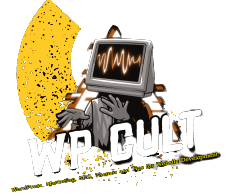Articles
WordPress 2.7 Beta 3

WordPress 2.7 Beta 3 has been released for your testing pleasure. Here are some of the changes since Beta 2 (over 160 changes in total):
- Numerous style improvements and refinements.
- All admin notices now go under the page title.
- PHP Notice fixes.
- Dashboard widget options now properly save.
- Menu fixes.
- New design for Quick Edit.
- Canonical feed URL fixes.
- Walker fixes.
- An update for Hello Dolly.
- Plugin installer updates.
- Numerous font updates.
- Updated login logo.
- Switch position of “Save Draft” and “Preview” buttons in publish module.
- File upload support for MS Office 2007+ file formats.
- Media upload buttons won’t show if the user doesn’t have the upload capability.
- Canonical redirects only do yes-www or no-www redirection for domains.
- Shift-click checkbox range selection improvement.
- Add New User page now separate.
- Tag suggest only suggests tags (not other taxonomy terms).
- QuickPress shows “Submit for Review” if user cannot publish.
- Private posts/pages, and password-protected posts/pages are rolled into new “Visibility” section of publish module.
If you have already installed Beta 1 or Beta 2, you can update to Beta 3 via the Tools -> Update menu. If you have problems, or if this is your first time in the 2.7 beta ring, you can download and upgrade the old fashioned way.
News
cforms II now GPL compliant
Well, it was a long run, ok, only 24 hours when Mr. Seidel’s announced that he would pull the plug on further updates to the cforms plugin.
But after consideration and many emails, he has released a update to a GPL compliant version of his plugin: 10.2.
News
Goodbye to cforms II
If you are using the cforms II, you may want to head over to Mr. Seidel’s site for more info on the matter.
Premium
Revolution Two: Church Theme
Benefits include the Church theme, unlimited theme support answered by our experts, customization techniques with our detailed theme tutorials and professional design services available by our list of recommended designers.

Price:
Single License: $59.95 Buy Now!
Pro Plus All-Theme Package: $199.95 Buy Now!
-
Tips & Tricks3 months ago
WordPress Security Hacks
-

 Pages5 months ago
Pages5 months agoWrite For Us – Guest Post
-
Showcase2 weeks ago
StylizedWeb.com
-
News5 months ago
How to: Show/Hide any div box with jQuery in WordPress
-
Tips & Tricks4 months ago
Remove the title attribute using jQuery
-

 Plugins2 months ago
Plugins2 months agoTop Membership plugins
-
Tips & Tricks2 months ago
How to: show/hide a widget in WordPress with jQuery
-
Guest Post2 months ago
The Top 10 Best Free Android Retro Games of all time


You must be logged in to post a comment Login